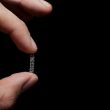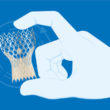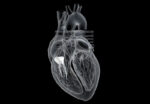TAVR treatment of severe aortic stenosis is becoming more and more common, showing comparable evolution, or even superior in some studies when using the femoral approach, vs. surgical aortic valve replacement (SAVR). One of the current challenges is TAVR durability vs. SAVR. Even though 9 or 10 years has been deemed acceptable by current standards,<a href="https://solaci.org/en/2024/05/03/reinterventions-in-tavr-with-self-expanding-valves/" title="Read more" >...</a>
ACC 2024 | SMART Trial: Self-Expanding or Balloon-Expandable TAVR in Patients with Small Aortic Annulus
Patients with severe aortic stenosis and a small aortic annulus face an increased risk of deteriorated valvular hemodynamic performance and adverse cardiovascular clinical outcomes after undergoing transcatheter aortic valve replacement (TAVR). This study, a prospective multicenter randomized trial, aimed to compare the efficacy and safety of two types of valves: the supra-annular self-expanding EVOLUT (SEV)<a href="https://solaci.org/en/2024/04/12/acc-2024-smart-trial-self-expanding-or-balloon-expandable-tavr-in-patients-with-small-aortic-annulus/" title="Read more" >...</a>
ACC 2024 | DEDICATE Trial: Transcatheter or Surgical Treatment of Aortic Valve Stenosis
In recent years, TAVR has been increasingly used; however, when it comes to younger, lower risk patients, its use is still challenged. In this context, there is limited information and we lack randomized studies on “real world” cohorts. The DEDICATE randomized 1.414 patients over 65 with severe symptomatic aortic stenosis. 701 of these patients received<a href="https://solaci.org/en/2024/04/11/acc-2024-dedicate-trial-transcatheter-or-surgical-treatment-of-aortic-valve-stenosis/" title="Read more" >...</a>
TAVR in the Different Types of Aortic Stenosis
Aortic stenosis (AS) is classified according to gradient into high flow and high gradient (D1), low flow-low gradient with reduced ejection fraction (D2), and paradoxical low flow-low gradient with conserved ejection fraction (D3). D3 AS is characterized by ≥50% ejection fraction, but with systolic volume index ≤35 ml/min. Post TAVR evolution of D2 and D3<a href="https://solaci.org/en/2024/04/05/tavr-in-the-different-types-of-aortic-stenosis/" title="Read more" >...</a>
Benefit of Cusp overlap method for self‐expanding transcatheter aortic valves
The need for permanent pacemaker implantation (PPM) continues to be one of the main challenges in TAVR, especially with self-expanding valves, with a pacemaker implantation rate that varies between 17.5% and 30% in large randomized studies, vs. 4% to 6.5% with self-expanding valves. Therefore, in an attempt to prevent the need for PPM implantation, the<a href="https://solaci.org/en/2024/02/02/benefit-of-cusp-overlap-method-for-self%e2%80%90expanding-transcatheter-aortic-valves/" title="Read more" >...</a>
Use of Apixaban and Post TAVR Valve Thrombosis
TAVR can be associated to early valve thrombosis, characterized by thrombi formation near or attached to the prosthetic valve, with or without valve dysfunction. This dysfunction is associated with increased leaf thickening and reduced leaflet motion, as well as reduced orifice area or increased transvalvular gradient. Triggered multislice CT allows dynamic valve assessment and thrombosis<a href="https://solaci.org/en/2024/01/25/use-of-apixaban-and-post-tavr-valve-thrombosis/" title="Read more" >...</a>
TricValve: 12-Month Evolution
Tricuspid regurgitation has become increasingly common, and current pharmacological treatment options are limited. In turn, surgery, which is a complex alternative, carries considerable rates of complications and mortality. In response to this issue, various percutaneous systems are being developed, such as edge-to-edge treatment, percutaneous annuloplasty, and caval valve implantation (CAVI), among others. In the analysis<a href="https://solaci.org/en/2024/01/18/tricvalve-12-month-evolution/" title="Read more" >...</a>
Evolution of Bicuspid Valves at 12 Months
Severe aortic stenosis due to a bicuspid aortic valve (BAV) is uncommon, especially in individuals under 65 years of age. While there are usually no significant differences according to the type of valve when it comes to surgery, with transcatheter aortic valve replacement (TAVR) some may arise. TAVR has seen significant advancements in the treatment<a href="https://solaci.org/en/2024/01/12/evolution-of-bicuspid-valves-at-12-months/" title="Read more" >...</a>
MYVAL, a TAVR Balloon-Expandable Valve with Promising Results
TAVR has been shown beneficial over time, and with the development of new generation of prosthetic valves and implantation techniques, outcomes have been improved, reducing the incidence of leaks y and the need for definite pacemaker. This study looked at the evolution of 100 patients with symptomatic aortic stenosis treated with Myval THV from Meril<a href="https://solaci.org/en/2023/12/19/myval-a-tavr-balloon-expandable-valve-with-promising-results/" title="Read more" >...</a>
Can Ultrasound Treat Aortic Stenosis?
Severe calcified aortic stenosis is a common condition that can currently be effectively treated with SAVR or TAVR. However, some patients, given comorbidities or anatomical characteristics, are not good candidates for these therapeutic alternatives. The non-invasive ultrasound therapy (NIUT) has surged as viable alternative. It claims ultrasound might act on calcified valves, and mobilize tissue<a href="https://solaci.org/en/2023/12/05/can-ultrasound-treat-aortic-stenosis/" title="Read more" >...</a>








